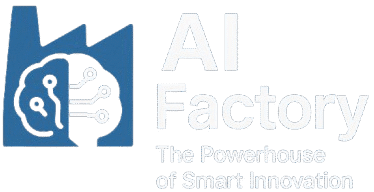Mastering Prompt Engineering in 2025: Secrets to AI Creativity
Introduction
In 2025, artificial intelligence has become an indispensable tool for creativity, problem-solving, and innovation across industries. But the secret behind AI’s remarkable outputs often boils down to one crucial skill: prompt engineering. Mastering prompt engineering unlocks the full creative potential of AI models, enabling you to generate precise, imaginative, and highly relevant results. In this comprehensive guide, you’ll discover the secrets to prompt engineering in 2025, from foundational concepts to advanced techniques — helping you harness AI creativity like never before.
Background and Context
Prompt engineering emerged as a critical discipline alongside the rise of large language models (LLMs) such as GPT-4, Claude, and others. At its core, it involves crafting the right input instructions—“prompts”—to steer AI models towards desired responses. Since AI models don’t “think” like humans, their output quality heavily depends on how questions or commands are posed. Over the years, prompt engineering evolved from simple keyword inputs to nuanced, context-rich instructions that can mimic expert-level creative and analytical thinking.
By 2025, prompt engineering is no longer just for AI specialists; it’s a must-have skill for developers, content creators, marketers, educators, and businesses aiming to leverage AI effectively. The ability to write clear, specific, and context-aware prompts determines the quality of AI-driven content, code, ideas, and solutions.
Detailed Comparison: Prompt Engineering Techniques in 2025
| Technique | Description | Best For | Limitations |
|---|---|---|---|
| Zero-shot prompting | Giving the AI a task without any example or context. | Quick queries, general knowledge tasks. | Can produce vague or generic answers. |
| Few-shot prompting | Providing a few examples to guide the AI’s response. | Complex or niche tasks needing context. | Requires well-chosen examples; more setup time. |
| Chain-of-thought prompting | Encourages AI to reason step-by-step before answering. | Math problems, logic tasks, detailed explanations. | Longer response times; may overcomplicate simple tasks. |
| Role prompting | Asks AI to assume a role or persona to tailor its output. | Creative writing, customer support simulations. | Persona may be misunderstood if not clearly defined. |
| Iterative prompting | Refining output by multiple rounds of prompts and feedback. | Projects requiring accuracy, revisions, or creative tweaks. | Time-consuming; needs user involvement. |
Key Features and Benefits of Mastering Prompt Engineering
1. Enhanced AI Creativity and Output Quality
Good prompts lead to more imaginative, context-aware, and relevant AI responses, boosting creativity in writing, design, and ideation.
2. Time and Cost Efficiency
Well-crafted prompts reduce the need for extensive edits or retries, saving time and computational resources.
3. Greater Control and Precision
Mastery over prompt engineering allows users to steer AI outputs closely to their goals, minimizing irrelevant or off-topic content.
4. Versatility Across Domains
From coding and data analysis to marketing and education, prompt engineering skills unlock AI potential in diverse fields.
5. Accessibility for Non-Experts
Anyone with a basic understanding can learn prompt engineering, democratizing AI usage beyond programmers and data scientists.
Pros and Cons of Prompt Engineering in 2025
| Pros | Cons |
|---|---|
| Unlocks full AI potential for creativity and productivity. | Can have a steep learning curve for complex tasks. |
| Improves accuracy and relevance of AI-generated content. | Sometimes requires trial and error to find the best prompt. |
| Reduces time spent on post-processing AI outputs. | Dependence on prompt quality; poor prompts yield poor results. |
| Enables customization for niche industries and use cases. | Advanced prompting techniques may require domain knowledge. |
| Empowers non-technical users to harness AI effectively. | AI models themselves still have limitations and biases. |
Use Cases: Who Should Master Prompt Engineering?
Content Creators & Writers
Use prompt engineering to generate compelling articles, scripts, poetry, and storytelling ideas with enhanced creativity and flow.
Developers & Data Scientists
Leverage prompts to generate code snippets, debug, create data summaries, and automate complex workflows.
Marketers & Social Media Managers
Create engaging ad copy, personalized messages, and trend-driven content by tailoring prompts to specific audiences and platforms.
Educators & Trainers
Design prompts for quizzes, explanations, tutoring, and personalized learning paths that adjust to student needs.
Business Leaders & Innovators
Use prompt engineering to brainstorm ideas, automate routine tasks, and simulate customer interactions to drive innovation.
FAQs about Mastering Prompt Engineering in 2025
1. What exactly is prompt engineering, and why is it important in 2025?
Prompt engineering is the practice of designing and refining input instructions (prompts) to AI models to generate desired, accurate, and creative outputs. In 2025, it is crucial because AI models rely heavily on the quality of prompts to perform tasks across industries, making prompt engineering a key skill for maximizing AI’s value.
2. How can I start learning prompt engineering effectively?
Begin by experimenting with different prompt styles such as zero-shot and few-shot prompting on accessible AI platforms. Study examples, analyze AI responses, and iteratively refine your prompts. Many online tutorials and communities now offer resources tailored for prompt engineering beginners.
3. Are there tools that help automate or suggest better prompts?
Yes, several AI platforms and third-party tools offer prompt suggestion features, templates, or even prompt optimization using AI itself. These tools can speed up learning and improve results, but understanding fundamentals remains important for custom and complex tasks.
4. What are common mistakes to avoid in prompt engineering?
Avoid vague instructions, overly long prompts without structure, and neglecting to provide context or examples. Also, beware of assuming AI “understands” intent without clear, explicit guidance, which can lead to off-topic or inaccurate outputs.
5. How does prompt engineering differ across various AI models?
Different AI models have unique architectures, training data, and response styles. While fundamentals of prompt engineering remain consistent, the best prompt formats and styles can vary. For instance, some models respond better to conversational prompts, others excel with structured instructions or examples.
Conclusion
Mastering prompt engineering in 2025 is your gateway to unlocking AI’s boundless creative power. As AI models become more sophisticated, the ability to craft precise, context-rich prompts becomes even more valuable across professions and industries. Whether you are a content creator, developer, or business innovator, developing prompt engineering skills helps you save time, reduce errors, and produce results that truly align with your vision.
Start small, experiment boldly, and gradually refine your prompts as you gain insight into how AI thinks and responds. With practice, prompt engineering will transform from a technical challenge into a powerful creative tool—fueling innovation in the AI-driven world of 2025.
Final Verdict: Model and User Preference Conclusion
While the choice of AI model—GPT-4, Claude, PaLM, or others—affects the nuance and style of AI creativity, the real differentiator lies in your prompt engineering skills. Users who invest in mastering prompt crafting unlock far superior results than relying on default or generic inputs. Pairing your prompt engineering expertise with the right model tailored to your needs creates a synergy that maximizes AI creativity and productivity.
For best results, explore model-specific prompt optimizations and keep abreast of evolving AI capabilities in 2025. Ultimately, prompt engineering empowers you to transform AI from a tool into a collaborative creative partner.

